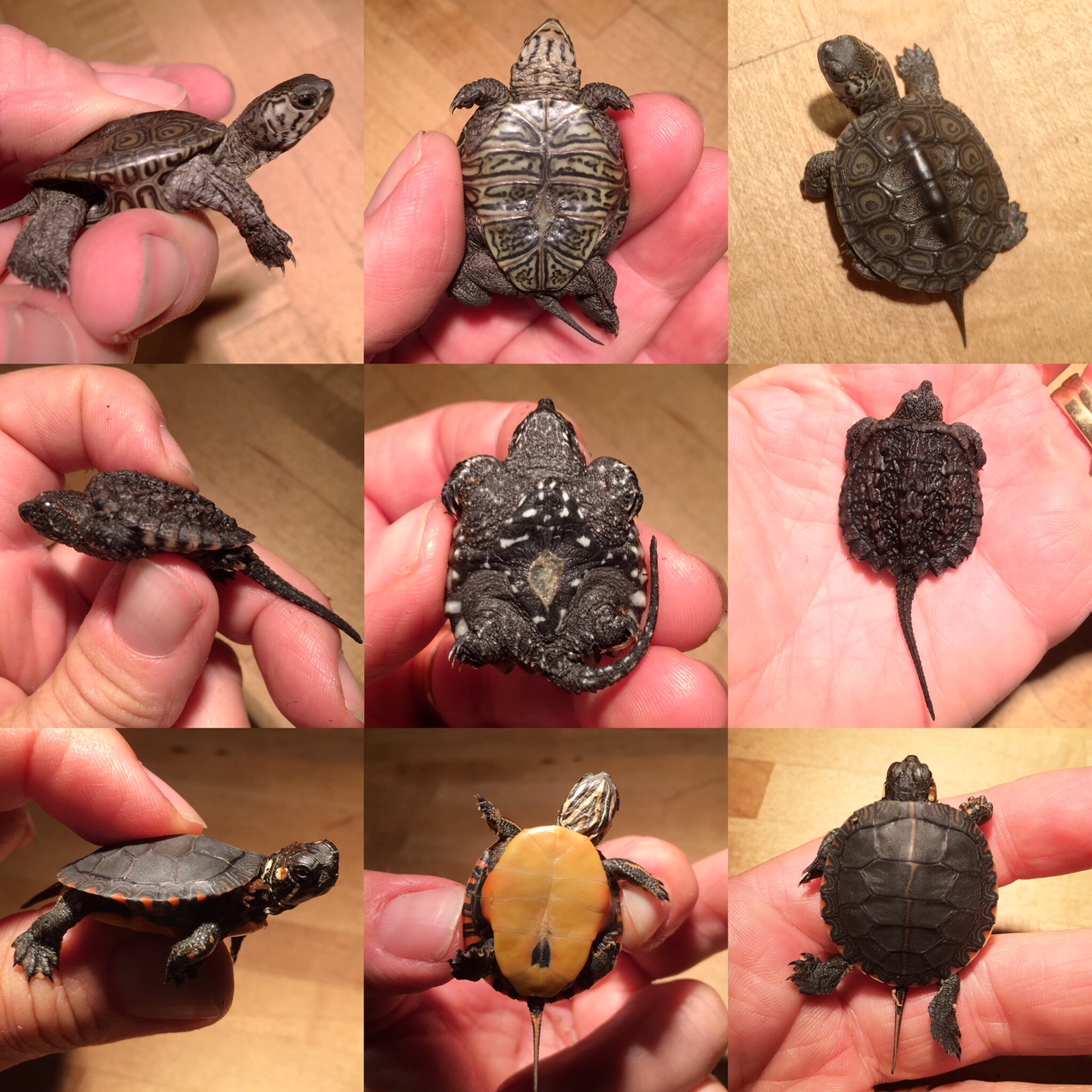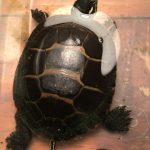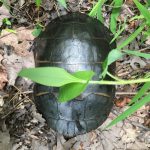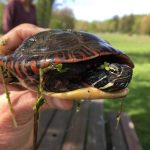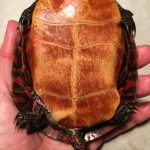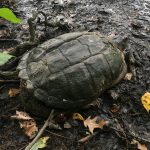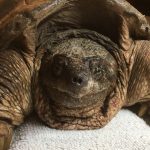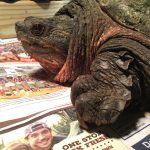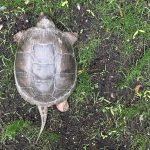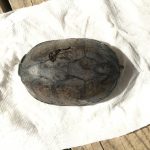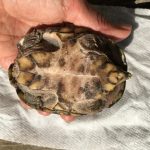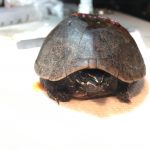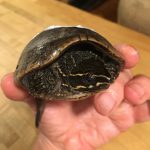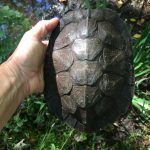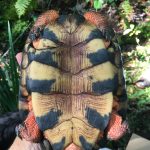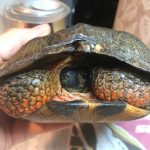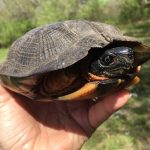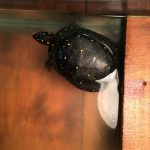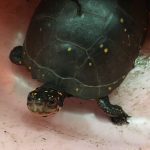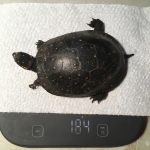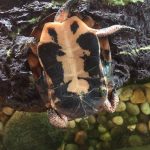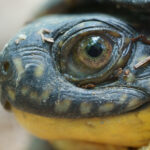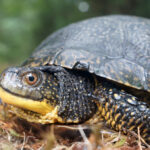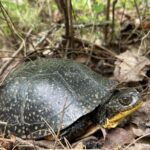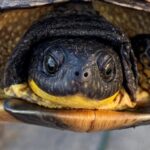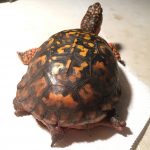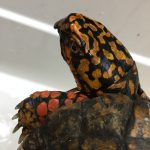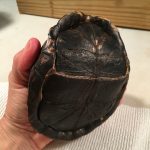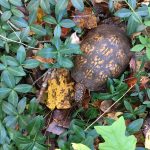Turtles are as different from one another as animals of any taxonomic group–think of bears, for example, which range from polar to black to grizzly to panda. Each has its own behaviors and needs. Some turtles are aquatic and some terrestrial, some can only live in fresh water while some prefer brackish (partly salty), some can handle strong currents but some require shallow, still water…and so on. Not counting sea turtles, which are migratory, Maine has seven species of turtles that live here year-round. It’s important to be able to identify the turtle you find because:
A) every species is different, and you need to know how to help–not hurt–that animal;
B) correctly reporting sightings of listed (endangered) species help protect their populations;
C) if it’s injured or sick, it will help the rehabilitator know what to expect and how to help you help the turtle until it gets to her/him.
Identifying Maine's Native Species
Sizes given are for carapace (shell) length. These are brief summaries;
for detailed information, visit the ME IF&W Wildlife page at
https://www.maine.gov/ifw/fish-wildlife/wildlife/species-information/reptiles-amphibians/index.html.
Listed species are protected by law.
Eastern Painted Turtle
Chrysemys picta
Now the most common species in the Northeast, painted turtles are often seen basking on logs or rocks in calm water. They have a smooth, blackish carapace (shell) with pale lines between scutes (sections), distinct red patterning around the edge (sometimes only visible from below), yellowish stripes on their head and legs, and a solid yellow plastron (bottom shell) which may look rusty. Adult size is 4.5-6″; hatchlings emerge in both fall and early spring.
Snapping Turtle
Chelydra serpentina
New England’s largest and most primitive-looking turtle, snappers can weight up to 40 pounds! At any size—even as hatchlings—they are most easily identified by their long, dinosaur-like tails. They may be very fleshy and have pointy noses and small plastrons (bottom shells). Snappers can be found in almost any type of wetland–even brackish estuaries.
Eastern Musk Turtle
Sternotherus odoratus
Sometimes mistaken for juvenile snapping turtles because of their pointy noses, long necks and tiny plastrons, Musk turtles are small, shy and rarely seen. Unlike snappers, they have short tails and smooth shells. They seldom leave their streams and ponds but do climb branches! Also known as Stinkpots for the musk they produce in self-defense, adults are just 3-5″ long, and hatchlings as small as beetles!
Species of special concern
Wood Turtle
Glyptemys insculpta
With a shell that resembles a layered, rough piece of wood, the wood turtle is aptly named. Its body resembles a box turtle–heavily scaled, orange-shaded legs and a similar head structure. Its unique plastron is yellow with a black splotch on each scute (section). A denizen of clear-running streams and rivers and adjoining forests and fields, adults can grow to 9 inches.
Threatened
Spotted Turtle
Terrapene Carolina Carolina
Once common, the Spotted turtle is now a listed species across its range, which includes Maine. Easily identified because its name describes its markings, this small black turtle with yellow-orange spots on its shell and body and black markings on its plastron lives in shallow, slow moving wetlands such as swamps, bogs, vernal pools and small ponds. They are rarely larger than 5 inches long.
Endangered
Blanding's Turtle
Emydoidea blandingii
Maine’s one fully endangered turtle, shy Blanding’s turtles are rarely seen but, like many semiaquatics, require large tracts of habitat and use varied types of wetlands. Medium to large (9″), helmet-shaped turtles, they have smooth, dark carapaces covered with yellow speckles. Known for their “smile,” their distinguishing characteristic is their bright yellow chin/throat.
Undesignated
Eastern/Woodland Box Turtle
Terrapene Carolina Carolina
An iconic species, long-lived Eastern box turtles are unmistakable. With their highly domed carapaces, distinctive black and yellow markings and hinged plastrons (bottom shells) that allow them to completely close up inside their shells, this semi-aquatic species lives primarily on land. While occasionally found in the wild here, they are not believed to be native to Maine at this time.
introduced species
Red Eared Slider
Trachemys scripta elegans
Sliders, until recently the most common pet store turtles, are also the most abandoned. As a result, the are now one of the world’s most invasive species. With lumpy, tortoise shell-type carapaces, striped heads with red or yellow ear patches, and yellow carapaces with black blotches, they can be the size of dinner plates! Remove any found in the wild and contact your state wildlife agency.
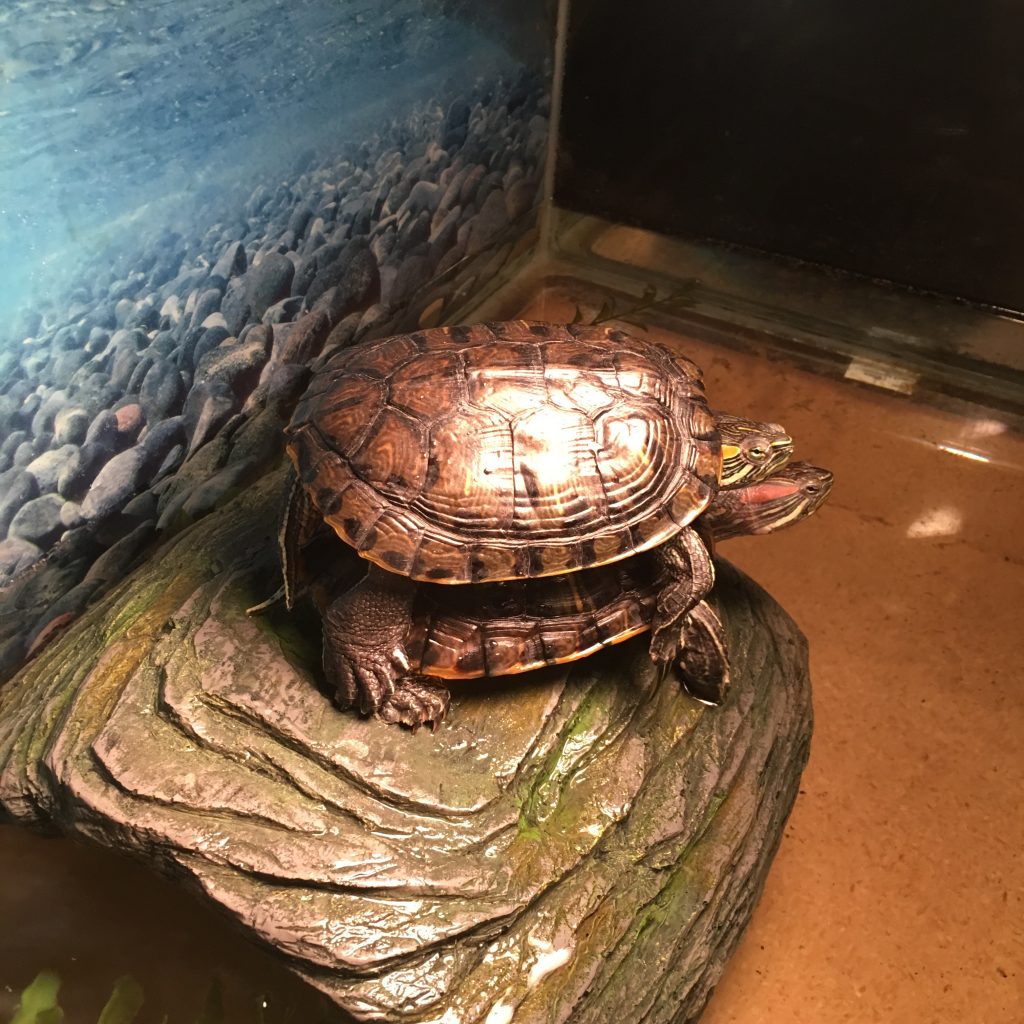
Hatchling Identification
Three species of turtle hatchlings commonly found in New England (only two in Maine) can be tough to tell apart, but if you get it wrong and don’t deal with it correctly, that baby may not survive. Here’s how to know whom you’ve found!
Diamondback Terrapin
Olive green, distinct rings in each scute (section) of carapace, varied patterns of dots and stripes on body and plastron.
Snapping Turtle
Rough, jagged shell, very long tail, and pointy, protruding nose. Mostly blackish brown, but white speckles on plastron.
Eastern Painted Turtle
Smooth, round black shell, yellow stripes on head, red designs aound bottom edge of carapace, smooth yellow plastron.
